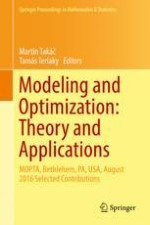This volume contains a selection of contributions that were presented at the Modeling and Optimization: Theory and Applications Conference (MOPTA) held at Lehigh University in Bethlehem, Pennsylvania, USA on August 17-19, 2016. The conference brought together a diverse group of researchers and practitioners, working on both theoretical and practical aspects of continuous or discrete optimization. Topics presented included algorithms for solving convex, network, mixed-integer, nonlinear, and global optimization problems, and addressed the application of deterministic and stochastic optimization techniques in energy, finance, logistics, analytics, health, and other important fields. The contributions contained in this volume represent a sample of these topics and applications and illustrate the broad diversity of ideas discussed at the meeting.
